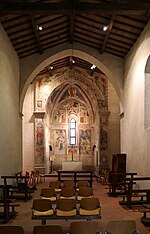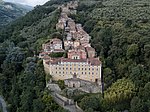Roman Catholic Diocese of Pescia
1519 establishments in the Holy Roman EmpireAccuracy disputes from February 2020All accuracy disputesReligious organizations established in the 1510sRoman Catholic dioceses established in the 16th century ... and 1 more
Roman Catholic dioceses in Tuscany

The Diocese of Pescia (Latin: Dioecesis Pisciensis) is a Latin diocese of the Catholic Church in Tuscany, about 41 miles (66 km) west of Florence. It is a suffragan of the Archdiocese of Pisa.On 14 October 2023, with the appointment of Fausto Tardelli as bishop, the Diocese of Pescia was united with the Diocese of Pistoia in the person of a single bishop.
Excerpt from the Wikipedia article Roman Catholic Diocese of Pescia (License: CC BY-SA 3.0, Authors, Images).Roman Catholic Diocese of Pescia
Viale Unità d'Italia,
Geographical coordinates (GPS) Address Nearby Places Show on map
Geographical coordinates (GPS)
| Latitude | Longitude |
|---|---|
| N 43.9 ° | E 10.6833 ° |
Address
Viale Unità d'Italia
51017
Tuscany, Italy
Open on Google Maps











